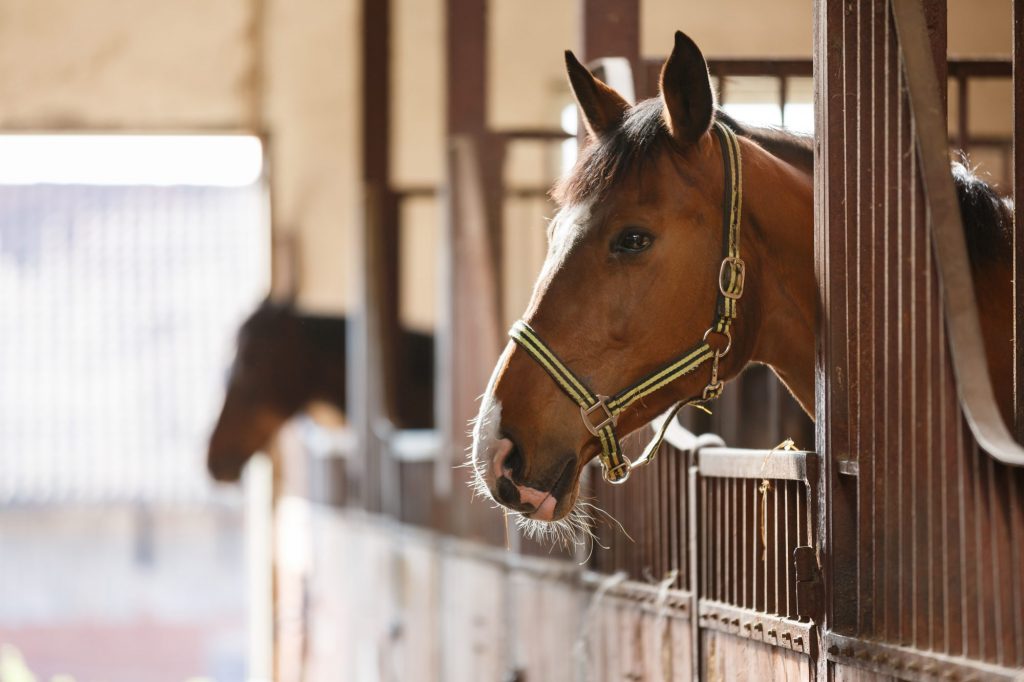Chronic obstructive pulmonary disease (COPD), or equine asthma, is the most common cause of the chronic cough and respiratory disease affecting 5-7% of horses in the UK. It is caused by the inhalation of an allergen, often dust and irritants from hay fodder or straw bedding. Horses can also get ‘pasture associated’ equine asthma, where they are allergic to certain types of pollen.
The first signs of possible equine asthma include rapid breathing and poor performance. Horses may go on to develop a milky white nasal discharge and an occasional cough, and they may find it harder to breathe, using the abdominal muscles to force the air out of their lungs – this can lead to a visible line of muscles known as a ‘heave line’.
In mild cases, audible changes within the lungs may not be detected; in more severe cases, crackles and wheezes may be audible. Endoscopy may be useful, and samples may be taken to look at cells in the mucus.
Treating equine asthma
Stables should be kept as free of dust as reasonably possible, using a dust-free bedding and rubber matting. Feeding haylage or steamed hay can significantly reduce the exposure to fungal spores; also, ensure your horse’s stable is well ventilated. Horses with allergies to dust benefit from getting out as much as possible.
When it comes to treatment, there are two main types. Bronchodilators are used to dilate the small airways and reduce the spasms in the respiratory system, enabling the horse to breathe more easily. These can either be administered orally or intravenously by a vet, though long-term use is not recommended as this can reduce their efficacy. However, inhaled options are also available, which require the horse to breathe through a spacer device.
Corticosteroids are effective drugs for treating horses suffering from recurrent airway obstruction (RAO), a symptom of equine asthma. Like the bronchodilators, they can be administered orally or intravenously, though oral versions are not as effective for use in respiratory disease. Often horses are treated initially with injectable or oral steroids to treat the acute disease and then moved onto an inhaled version, which also require a spacer device. Inhaled steroids have the advantage of going directly to the relevant site to reduce the risk of laminitis associated with steroids.
Dr Kate Maxwell BSc (Hons) BVSc MRCVS GPCert(EqP)






